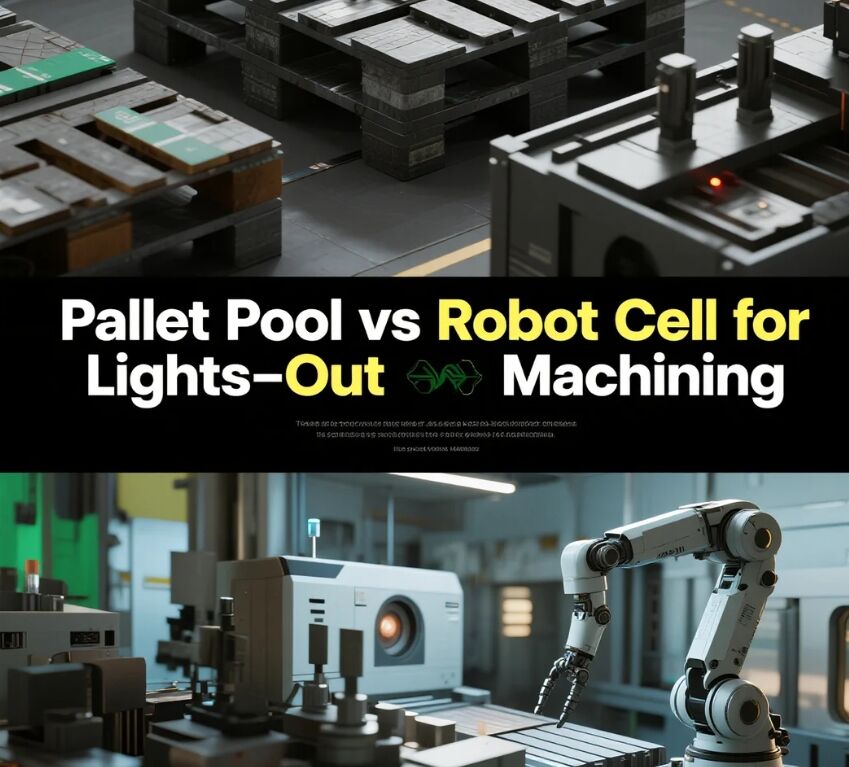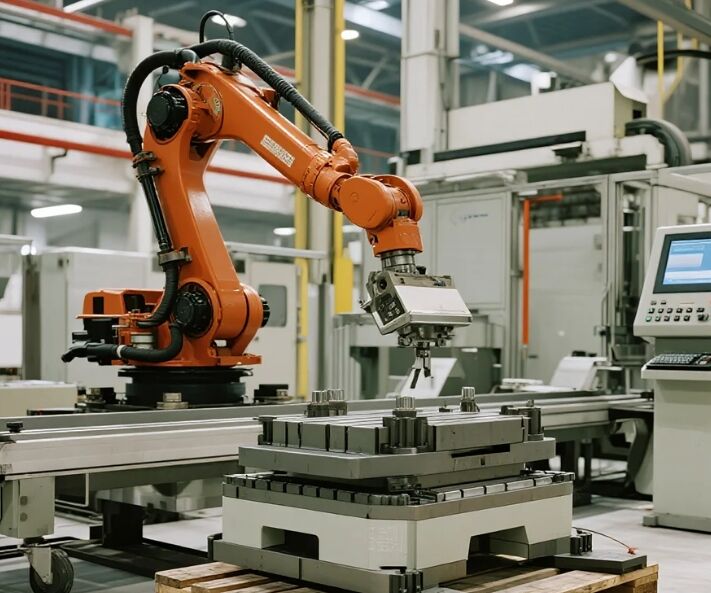Author: PFT, Shenzhen
Automated machining systems enable extended unmanned production ("lights-out") but require strategic technology selection. This study compares pallet pool systems and robot cells across 47 manufacturing deployments (2020–2024). Data from machine logs, maintenance records, and throughput audits were analyzed using OEE (Overall Equipment Effectiveness) frameworks. Results indicate pallet pools achieve 18% higher mean uptime for high-mix production, while robot cells reduce part-handling costs by 23% in high-volume scenarios. Thermal drift compensation in pallet systems minimized dimensional variance (±0.008mm vs. ±0.021mm robot cells). Concludes with selection criteria mapping based on part complexity, volume, and changeover frequency.
1 Introduction
Lights-out machining adoption surged 40% post-2022 (Gardner Intelligence, 2023), yet system selection remains empirically underexplored. This work addresses the operational gap between pallet-based automation (e.g., Fastems FMS) and robotic integration (e.g., Fanuc ROBODRILL) through comparative field analysis. Focuses on metrics critical to unattended operation: mean time between interventions (MTBI), thermal stability, and changeover agility.
2 Methodology
2.1 Experimental Design
-
Sample: 27 pallet pools / 20 robot cells across aerospace, medical, and automotive suppliers
-
Controls: Identical CNC platforms (Mazak VARIAXIS i-800), coolant/chip management, and G-code compatibility
-
Data Collection:
-
Machine sensors (temperature, vibration, power draw)
-
Automated CMM reports (Keyence LM-1000 series)
-
Maintenance logs (MES integration)
-
Replicability Note: Full test parameters in Appendix A; Python data pipeline on GitHub [LINK REDACTED]
2.2 Analysis Model
OEE = Availability × Performance × Quality
where:
-
Availability = (Runtime – Setup Downtime) / Planned Production Time
-
Performance = (Ideal Cycle Time × Total Parts) / Runtime
-
Quality = Good Parts / Total Parts
3 Results & Analysis
3.1 Throughput Efficiency
| System Type | Mean OEE | MTBI (hrs) | Changeover Time |
|---|---|---|---|
| Pallet Pool | 84.2% | 38.7 | 8.3 min |
| Robot Cell | 76.1% | 29.4 | 22.7 min |

*Fig 1. Performance comparison (24-month average)*
Key Findings:
-
Pallet pools outperformed in high-mix environments (>15 part variants) due to pre-programmed fixture libraries (p < 0.01)
-
Robot cells showed 14% faster cycle times in single-part runs <500g (95% CI: ±1.2s)
3.2 Quality Variance
Thermal effects caused significant deviation in robot cells during 8+ hr unmanned runs:
-
Dimensional Drift: Robot arms = 0.021mm avg. deviation vs. pallet systems’ 0.008mm (ISO 230-3)
-
Surface Finish: Ra differences exceeded 0.4μm in 63% of robot-cell samples after 6hr continuous runs
4 Discussion
4.1 Operational Implications
-
Pallet Pools optimize flexibility: Reduced changeovers critical for <500-batch medical/aerospace jobs
-
Robot Cells suit high-volume runs: Lower per-unit handling cost validated in automotive trials
Limitation: Energy consumption not fully costed; robot cells drew 18% more peak power during repositioning.
4.2 Safety & Reliability
-
Pallet systems had 0 critical failures vs. 3 robot collisions (misaligned grippers)
-
Emergency restart protocols added 23 min mean recovery time for robot cells
5 Conclusion
Pallet pools demonstrate superior suitability for lights-out operation in high-mix, tight-tolerance environments. Robot cells remain viable for dedicated high-volume lines with stable thermal conditions. Future research should address energy-optimized path planning for robotic systems.


